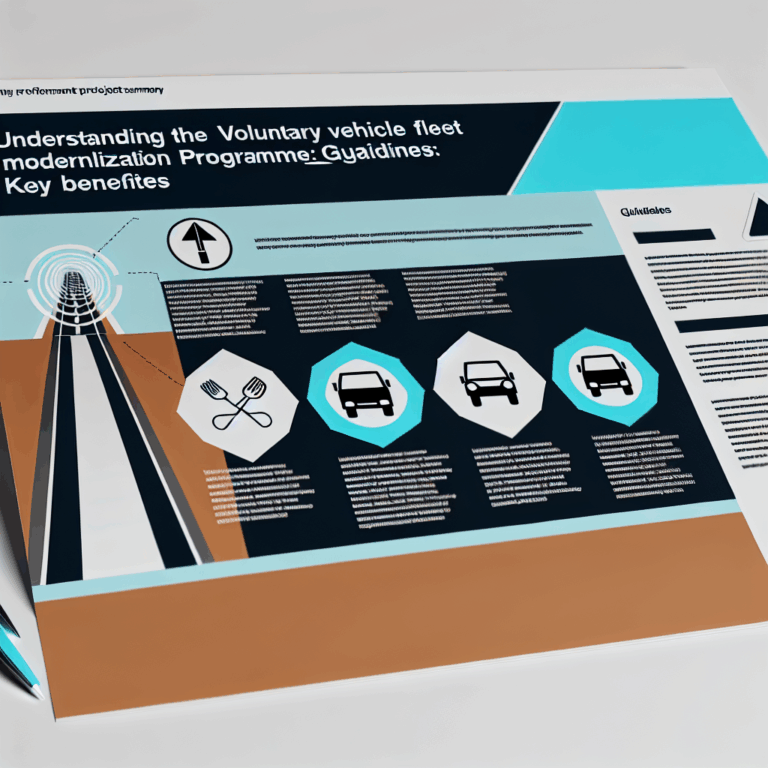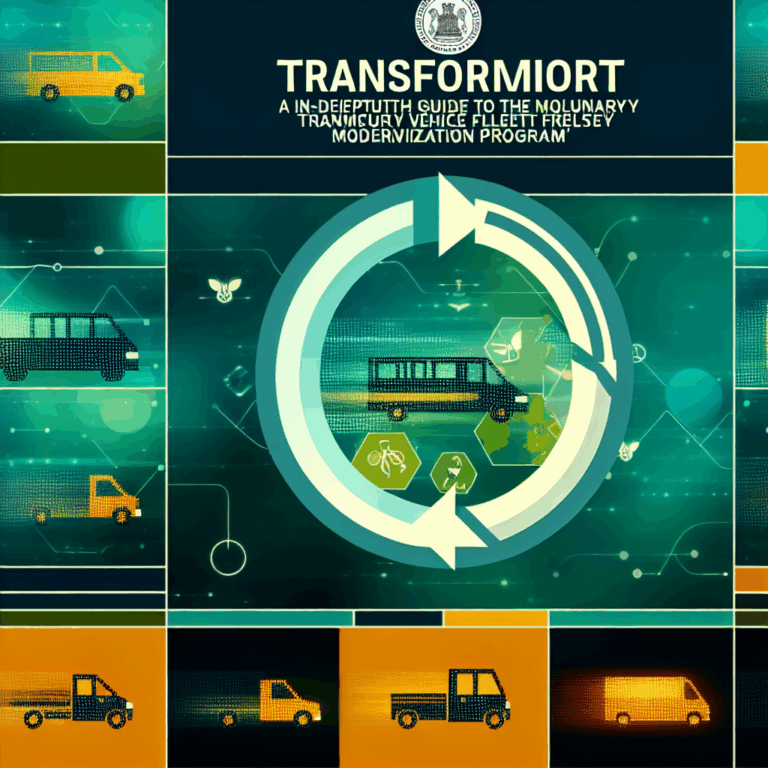Copyright @ 2023 www.digimitr.com. All rights reserved.

Enhancing Sustainability: An In-Depth Look at the Voluntary Vehicle Fleet Modernization Programme by the Ministry of Road Transport & Highways
Discover the important features of the government scheme titled “Enhancing Sustainability: An In-Depth Look at the Voluntary Vehicle Fleet Modernization Programme by the Ministry of Road Transport & Highways”. This program is overseen by the relevant ministry and aims on providing benefits to eligible beneficiaries.
Here is a comprehensive overview:
Introduction
The world is increasingly turning its gaze towards sustainability, and the automobile industry is no exception. The Ministry of Road Transport & Highways (MoRTH) in India has initiated the Voluntary Vehicle Fleet Modernization Programme (VVMP) to enhance the sustainability of road transport. This comprehensive program aims to improve vehicle efficiency and reduce emissions while aligning with global environmental goals. The VVMP is more than just a policy; it is a directive that advocates modernization, safety, and environmental awareness among vehicle owners and manufacturers alike.
Eligibility Criteria
The Voluntary Vehicle Fleet Modernization Programme extends its envelope to various stakeholders. Primarily, the program aims at vehicle owners of older, non-BS-VI compliant vehicles, which contribute significantly to pollution levels. Owners of passenger vehicles, commercial vehicles, two-wheelers, and three-wheelers built before the rollout of the BS-VI standards are encouraged to participate. Additionally, fleet operators and businesses with a substantial number of older vehicles are also eligible. Each of these participants plays a critical role in the greater scheme of reducing vehicular emissions and improving air quality.
Key Features and Benefits
The VVMP boasts a range of features designed to make the transition to modern vehicles more appealing. One of its fundamental characteristics is the offer of financial incentives to vehicle owners who opt to replace their old vehicles with newer, environmentally friendly models. These incentives often come in the form of rebates, tax reductions, or scrapping subsidies.
Moreover, improved vehicle technology means better fuel efficiency and lower operational costs. Newer vehicles are often equipped with advanced emission control technologies, making them not just greener but also more reliable and safer on the road. From a broader societal perspective, the program contributes to cleaner air quality, reducing health impacts associated with air pollution.
Application Process
The application process for the VVMP is straightforward and user-friendly, designed to minimize barriers for interested participants. Eligible vehicle owners can apply through the MoRTH website or designated online portals. Once an application is submitted, it is reviewed for eligibility. After validation, applicants are given a timeline to dispose of their old vehicle—an integral step to qualify for the incentives.
Additionally, applicants may need to provide necessary documentation regarding the age of their vehicle and its registration details. The facilitation through online resources ensures expediency and assists in a smooth transitioning process, which further encourages participation.
Funding and Budget
The VVMP operates under a structured funding framework devised by the Indian government. The budget allocated to the program is substantial, designed to cover the costs of incentives and administrative expenses incurred during its rollout. The financial allocations are sourced from various governmental budgets, state contributions, and possibly international funds aimed at environmental sustainability.
Funding models are flexible to accommodate participants from different socio-economic backgrounds. This inclusiveness is critical to ensure a widespread impact, as it allows more individuals and businesses to modernize their fleets without significant financial strain.
Achievements or Impact
Since its inception, the Voluntary Vehicle Fleet Modernization Programme has made remarkable strides in enhancing vehicular sustainability. Preliminary reports indicate a significant uptick in the number of old vehicles being scrapped in favor of newer models that comply with contemporary emission norms.
Moreover, the program has contributed to the improvement of environmental metrics in urban areas, particularly in cities grappling with severe air quality issues. By facilitating the transition to modern vehicles, the VVMP has not just aided vehicle owners but also bolstered public health initiatives aimed at curbing pollution-related ailments.
Challenges (if any)
Like any large-scale initiative, the VVMP has faced its share of challenges. One of the notable hurdles is the lack of awareness among vehicle owners regarding the program’s benefits and incentives. Many potential participants remain skeptical or uninformed about the financial advantages of upgrading their vehicles.
Another challenge pertains to the infrastructure for disposing of older vehicles. The scrapping facilities must be accessible and environmentally compliant to prevent the unintended pollution from scrapped vehicles. Ensuring that these facilities meet regulatory standards is crucial for the program’s integrity and success.
Recent Updates
Recently, the Ministry of Road Transport & Highways has taken steps to revamp the VVMP based on emerging insights and stakeholder feedback. Enhanced communication campaigns are now underway to educate the public and potential participants about the program’s benefits. Additionally, efforts are being made to establish more scrapping centers to facilitate the disposal of old vehicles, thus removing barriers to entry.
The government is also exploring partnerships with local automobile manufacturers to further incentivize modern vehicle purchases. This is aimed at aligning the program with national manufacturing initiatives, ensuring a holistic approach towards sustainability and economic growth.
Conclusion
The Voluntary Vehicle Fleet Modernization Programme stands as a cornerstone for India’s quest toward sustainable transportation. As the program fosters modernization, environmental welfare, and economic viability, it presents an avenue for vehicle owners to contribute actively to a cleaner and greener future. Through continuous efforts in awareness, funding, and infrastructure, the VVMP promises a transformative impact on both individual vehicle owners and the nation’s environmental health.
FAQ
What types of vehicles are eligible for the VVMP?
The program primarily targets older vehicles that do not comply with the BS-VI emission standards, including passenger cars, two-wheelers, three-wheelers, and commercial vehicles manufactured before the implementation of these norms.
Is there financial support for scrapping old vehicles?
Yes, the VVMP provides financial incentives such as subsidies and rebates for vehicle owners who choose to replace their older vehicles with compliant models as part of their modernization process.
How can one apply to the VVMP?
Eligible vehicle owners can apply through the MoRTH website or designated online portals. After submission, the application will be reviewed, and upon validation, necessary documentation should be provided as part of the scrapping process.
For more information, check out official government site,
Official government website or relevant source not provided.
Stay updated on related schemes and initiatives using hashtags: #Enhancing #Sustainability #InDepth #Voluntary #Vehicle #Fleet #Modernization #Programme #Ministry #Road #Transport #Highways
Join the discussion about this scheme in the comments below!





